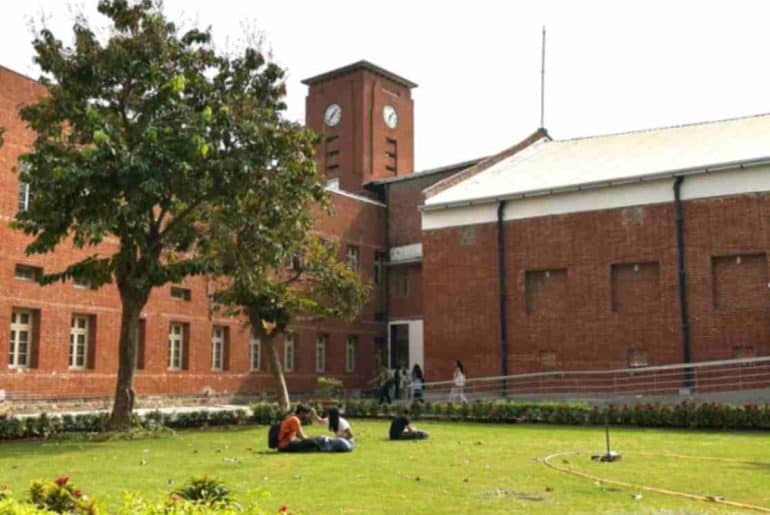In a country obsessed with engineering and medical degrees, the field of humanities takes a step back. There is a lack of liberal arts universities in the country when compared to government, and science and technology related institutions.
College admissions are a testing time for a student. The probability of getting in to one’s preferred college/university is very exhilarating, but the more important question is the choice of stream for one’s further studies. Education in India for high school and further education is a division on ‘streams’. The predominant ones are science, commerce, and humanities. They are hierarchical in nature, as for an Indian parent the order places science at the top, followed by commerce, and humanities respectively.
The article brings to light a prominent issue in the Indian higher education scene: the lack of liberal arts universities. Liberal arts, within the past decade, has been a good study option for a lot of students. In the western universities, there is a major focus on their course structures to cater to the liberal arts facilities. In comparison to their eastern counterparts like India and other Asian universities, liberal arts is still a blooming concept, majorly restricted to private universities.
Liberal arts as a concept was first designed by the Greeks and Romans, as a form of essential education required for an active civic life. Basic subjects taught under it were grammar, rhetoric, logic, etc. However, in the modern curriculums, liberal arts has grown into a multitude of different subjects, with a promising prospect of varying skills and producing students as global citizens with a multi-dimensional knowledge of different subjects.
According to the most recent published data by University Grants Commission, on 25th September 2018, there are a total of 318 Private Universities established by the Acts of the Legislatures of different states. In India, some of the more prominent and well known, liberal arts universities include universities like Ashoka University, O.P. Jindal global university, FLAME Pune, etc. While these universities offer attractive courses and world class infrastructure, the high fees is a major concern for potential students. These universities also promise world class standardised education, career prospects, and partnerships with big companies for future job prospects. A major attraction to these universities is the ease of adaptability one has, for pursuing post-graduation courses abroad, due to the similarity in course and work structure.
The study of humanities is still taken quite lightly. A lot of the state and centre-run universities and colleges provide a basic Bachelor’s degree in the mainstream subjects of humanities. There is neither much versatility in course selection, nor enough staff to ensure introduction of more flexible course structures. A major benefit which students adhere to a degree from these government run institutes is the feasibility of education. It is economical and reputed. A lot of students also wish to take it up as it helps in the preparation for their civil services aspirations later on. A popular career option is also academia and politics. While a major attraction today on a global level is MBA, with B-schools offering seats to over five lakh students every year according to a recent Assocham report,, a lot of students in these colleges are from engineering and commerce backgrounds. .
A major factor for the lack of universities catering to liberal arts is also because of the demand-supply factor.. According to the general thinking of an Indian family till date is that engineering and medical sciences remain the most highly opted courses in the country, as they are considered “safe” options.. India, along with other Asian countries, is also the biggest supplier of IT and technically skilled labour in the world. Hence, when compared to other Asian countries, the state of Indian universities is almost the same. . Even though the liberal arts courses provide a number of career options the general desire for high-paying jobs and a better standard of living is a driving force to opt for other courses. Luxury and sustenance is considered to be of a greater value than personal “passions” and hobby in a country like ours.
From the beginning, there has been good investment in institutes related to science and technology, and management like Indian Institutes of Technology, Indian Institutes of Management etc., which are government backed and autonomous, and have been given international accreditation. Government sponsored liberal arts universities are fewer in number, but very highly accredited. Universities like English and Foreign Languages University are known for delivering quality education in different foreign languages like Arabic, Chinese, French, German, Spanish, Italian, among many others, and in areas such as Education, Literature, Linguistics, Interdisciplinary and Cultural Studies etc.
The need to have more liberal arts universities in India is a must, as they offer a great deal of flexibility in subject options.. There are options like deferred admissions, and students often take a gap year to explore their courses more thoroughly, and also volunteer in their time off.
Liberal arts universities remain a popular choice for the upper middle class and the more affluent sections of the society in the urban areas. A major reason why this happens is because of soaring fees. While India is endowed to take its education sector in the same manner as in countries like the USA and the UK, where higher education is expensive, India should try to incentivise the private universities to bring more scholarship and financial aid opportunities. This is apart from the present situation wherein the government itself caters to such services, albeit in a limited number.. Moreover, the government should also invest heavily in the improvement of higher education. . While public universities in India do have a very vivid course structure like that of foreign countries, the lack of options in courses is something which affects the career choices for students. A lot of the times, students compromise on their career options in lieu of studying and associating their profiles with a degree from a government institute.
The future state of affairs may seem bleak for now, but with so many different job portals opening up in every field, liberal arts may be taken seriously and more educational institutions would be put to practice for its sustenance.
Feature Image Credits: Perkins Eastman
Avnika Chhikara
[email protected]



